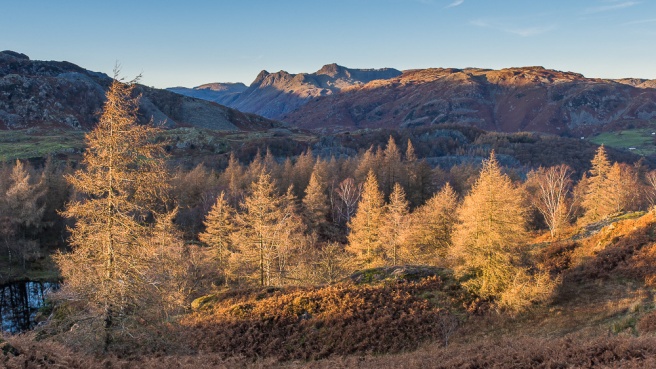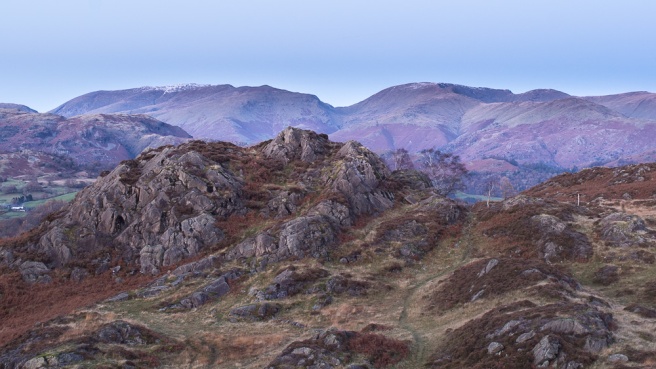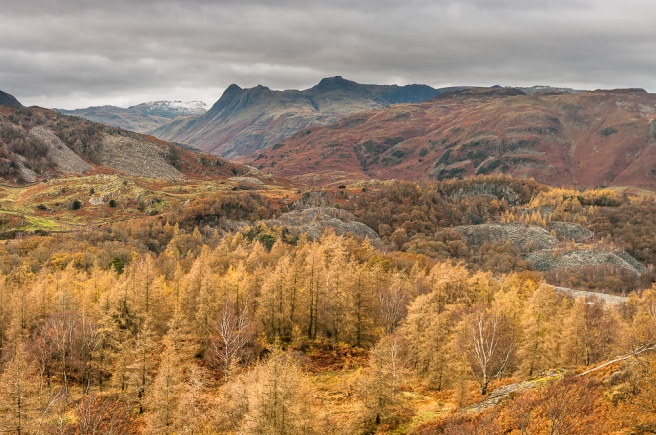
This was the first day’s shooting with my new Panasonic lens for my Olympus OMD-EM10 and I was excited by it. Also the first time I’ve been able to try using my Lee neutral density graduated filters with the Olympus and I was interested to see how that would work ( here’s how it worked) .
The weather turned out fantastically well and I went back to my current-favourite place – Holme Fell again. I hope you’re not bored with shots of the Langdale Pikes and Fairfield.
The sunset was glorious, though lacking any clouds to add drama, but the larch trees were lit up in flame. After the sun had gone I kept shooting to get some of the lovely mauve colours on the landscape.

I’m impressed by the quality of the new lens. Better than my Pentax, more consistent than the old Olympus lens I had on the OMD. Not bad for £80. I also took some shots with the Pentax, which have quite a different look to them though whether you’ll notice is doubtful.





















